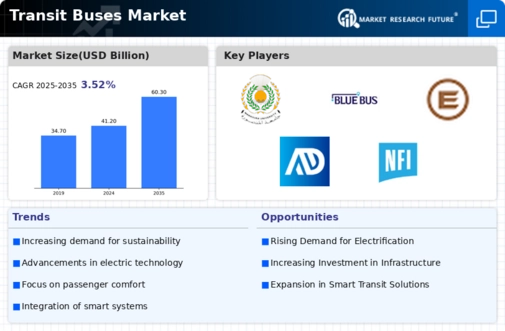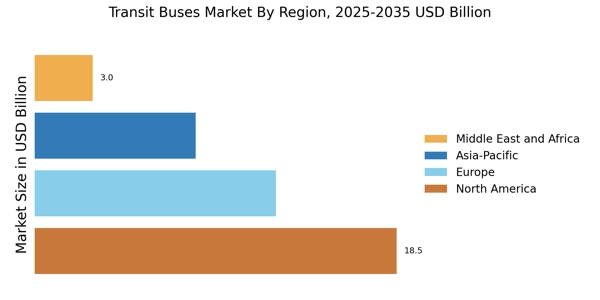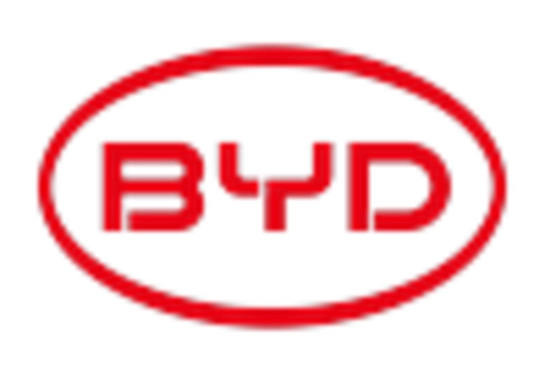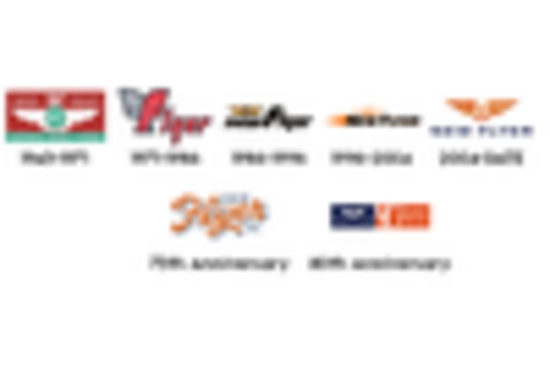Increasing Urbanization
The Transit Buses Market is experiencing a notable surge due to the rapid urbanization occurring in various regions. As populations migrate towards urban centers, the demand for efficient public transportation systems intensifies. This trend is reflected in the increasing investments in transit infrastructure, with many cities allocating substantial budgets to enhance their bus networks. For instance, cities are expanding their bus rapid transit systems to accommodate growing commuter needs. The rise in urban density necessitates reliable and accessible transit options, positioning transit buses as a vital component of urban mobility solutions. Consequently, the Transit Buses Market is likely to witness sustained growth as municipalities prioritize public transport to alleviate congestion and reduce environmental impact.
Government Initiatives and Funding
Government initiatives play a pivotal role in shaping the Transit Buses Market. Various governments are implementing policies aimed at promoting public transportation as a sustainable alternative to private vehicle use. This includes funding for the procurement of new buses, particularly those that are environmentally friendly, such as electric and hybrid models. For example, several countries have introduced grants and subsidies to encourage transit agencies to upgrade their fleets. The financial support from government bodies not only enhances the operational efficiency of transit systems but also stimulates market growth. As a result, the Transit Buses Market is poised for expansion, driven by favorable regulatory frameworks and increased public investment in transit infrastructure.
Rising Demand for Public Transportation
The rising demand for public transportation is a critical driver of the Transit Buses Market. As urban populations grow, the need for efficient and reliable transit options becomes more pronounced. Public transportation is increasingly viewed as a viable solution to combat traffic congestion and reduce travel times. Recent studies indicate that cities with robust public transit systems experience lower levels of traffic congestion, which in turn enhances the overall quality of life for residents. This growing recognition of the benefits of public transit is prompting governments and transit authorities to invest in expanding and modernizing bus services. Consequently, the Transit Buses Market is expected to thrive as more individuals opt for public transportation as their primary mode of travel.
Technological Advancements in Bus Design
Technological advancements are significantly influencing the Transit Buses Market, particularly in bus design and manufacturing. Innovations such as lightweight materials, improved aerodynamics, and energy-efficient engines are enhancing the performance and sustainability of transit buses. The integration of smart technologies, including real-time tracking and automated fare collection systems, is also transforming the passenger experience. According to recent data, the adoption of advanced technologies is expected to increase operational efficiency by up to 20%. These developments not only improve service reliability but also attract more riders to public transit. Consequently, the Transit Buses Market is likely to benefit from these advancements, as transit agencies seek to modernize their fleets and enhance service delivery.
Environmental Concerns and Sustainability
Environmental concerns are increasingly driving the Transit Buses Market towards sustainable practices. As awareness of climate change and air pollution grows, there is a heightened demand for eco-friendly transit solutions. This has led to a significant shift towards electric and hybrid buses, which produce lower emissions compared to traditional diesel models. Many cities are setting ambitious targets for reducing greenhouse gas emissions, prompting transit agencies to adopt cleaner technologies. For instance, the transition to electric buses is projected to reduce operational costs and improve air quality in urban areas. As a result, the Transit Buses Market is likely to see a robust increase in the adoption of sustainable transit solutions, aligning with global efforts to combat environmental challenges.


















Leave a Comment